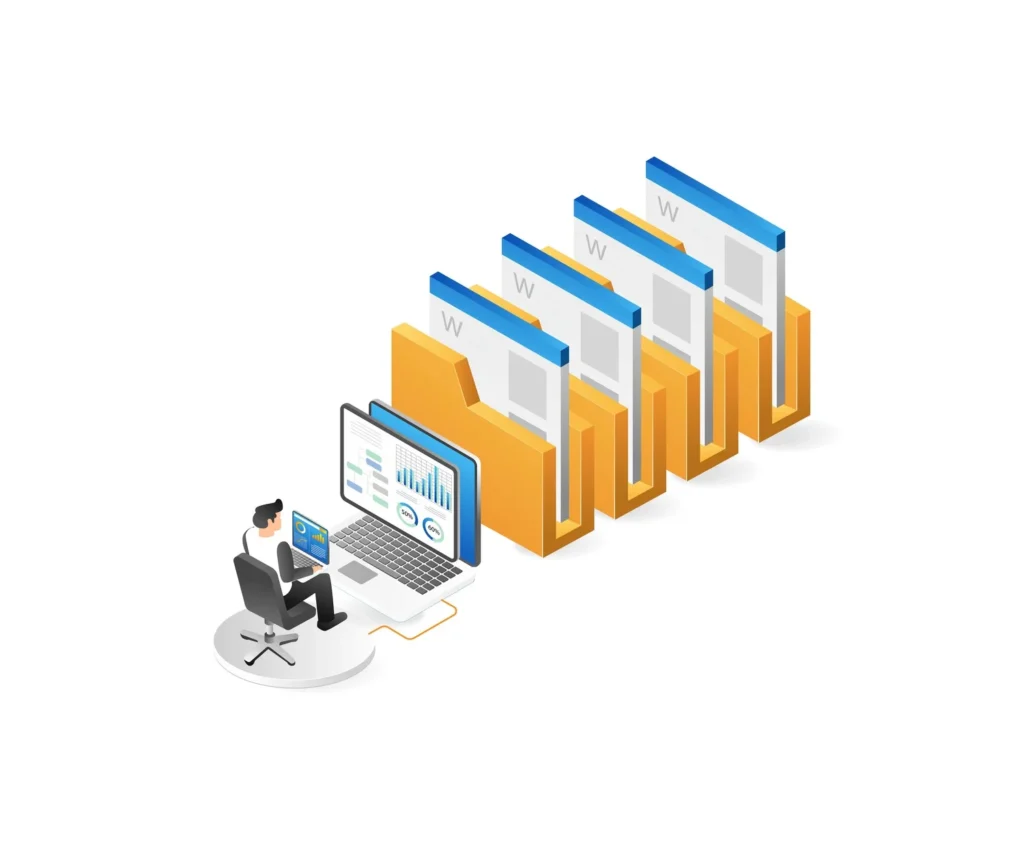Enterprise data management (EDM) refers to the strategies and processes that businesses use to efficiently collect, organise, store, and use massive amounts of data. Implementing EDM can help improve data quality, accessibility, and security.
That is possible because the enterprise data management process typically includes a set of strict policies that emphasise data governance to ensure high-quality data, data integration to incorporate it into applications, data accessibility to consolidate data in one easy-to-access location, and data security.
After we’ve covered the basics of enterprise data management, let’s explore deeper into the benefits, components, and other details of this data management strategy.
Benefits of Enterprise Data Management
EDM can help with company-wide data efforts by improving decision-making, increasing operational efficiency, lowering risks, and enhancing regulatory compliance. Centralising data management efforts can help organisations gain a competitive advantage in an increasingly data-driven business landscape. There are many benefits to EDM, some of which include:
- Improved Decision-Making: One of the primary advantages of EDM is its ability to provide accurate and timely information. When data is organised and easily accessible, decision-makers can rely on up-to-date insights to make informed choices. This leads to better strategic planning and execution.
- Enhanced Data Quality: EDM focuses on maintaining the quality of data throughout its lifecycle. This benefit can be achieved by implementing standardised processes and data governance policies that ensure that the information on which organisations rely is accurate, consistent, and reliable.
- Increased operational efficiency: Efficient data management streamlines processes, reduces redundancy, and minimises the risk of errors. This, in turn, enhances operational efficiency as employees spend less time searching for information and more time on value-added tasks.
- Regulatory Compliance: The increased demand for data leads to stricter data regulations. That is why compliance should be the top priority for organisations. EDM assists businesses in complying with data protection laws and industry regulations by implementing strong security measures, access controls, and audit trails.
- Cost Savings: Efficient data management can lead to significant cost savings. This can be achieved by eliminating redundant data, optimising storage, and improving processes. Organisations can reduce infrastructure costs and increase the return on investment (ROI) for their IT initiatives.
Before we get into the key components of EDM, you’ll need to understand how data moves around during its life cycle. Learn more about that in our article, “Data Management Lifecycle: What It Is and the 8 Stages of the Process“.
EDM Components
EDM components may differ from one another. Each can be distinct from the others, depending on the needs and requirements of the company. However, there are some fundamental rules to follow when implementing enterprise data management. According to Wikipedia, here are some of the general EDM components that need to be followed during implementation.
1. Stakeholder requirements
EDM needs agreement among multiple stakeholders (at the appropriate level of authority) who all understand and support the EDM objectives.
EDM begins with a thorough understanding of the end users’ and the organisation’s overall requirements. Managing stakeholder requirements is a critical and ongoing process that requires an understanding of workflow, data dependencies, and an organisation’s tolerance for operational disruption.
Many organisations use formal processes like service level agreements to specify requirements and set EDM programme goals.
2. Policies and procedures
A data model, business glossary, master data shared domains, data cleansing and normalisation, data stewardship, security constraints, and dependency rules are all examples of operational policies and procedures that are typically part of an effective EDM. These policies and procedures are also documented and enforced. As part of the EDM initiative, these policies and procedures are often documented for the first time.
3. Data definitions and tagging
One of the biggest problems with EDM is that it can be hard to compare data from different internal and external sources.
A lot of the time, these sources use different words and definitions to talk about the data itself, which makes it hard to compare data, automate business processes, feed complex applications, and share data.
This usually makes the process of mapping and cross-referencing data hard. The metadata part of EDM is what makes sure that all the terms and definitions are the same at the data attribute level. This is a necessary step for good data management.

4. Platform requirements
Even though EDM is mainly a problem with data, there is also a core technology issue that needs to be dealt with. It is important for businesses to have a storage platform that works, a complete data model, and a strong messaging infrastructure.
They have to be able to work with the problems that come with the old technology infrastructure and add data to applications. A big part of the EDM process is either building the platform or teaming up with a well-known tech company to work on how the data is stored and added to business apps.
What is the difference between EDM and MDM?
Enterprise data management (EDM) is the process of cataloguing all data, both internal and external, in an rganization. Master data management (MDM) is a subset of EDM that focuses on creating a single, consistent view of data across the organisation. Here are all the main differences between EDM and MDM.
Enterprise Data Management (EDM):
- Managing all kinds of data across the organisation; covers a wider range of tasks.
- Deals with data governance, data quality, and data lifecycle management.
- Attempts to give a full picture of all data assets and how they connect to each other.
Master Data Management (MDM):
- Specifically, it manages master data, which includes important things like employees, customers, and products.
- Make sure that all of the organisation’s master data is correct and consistent.
- Often used together with EDM to manage data in a more complete way.
EDM focuses on creating accurate, consistent, and transparent content. It emphasises data precision, granularity, and meaning. EDM also addresses how content is integrated into business applications and passed along from one business process to another.
MDM helps organisations establish and manage processes that enable them to become a digital product delivery service. MDM focuses specifically on ensuring the quality and consistency of key master data.
MDM systems are both a system of entry (SOE) and a system of record (SOR). This means that master data is updated centrally before changes are synchronised with other systems.
What is an example of enterprise data management?
Organisations can get the most out of data management if they have clear goals and expectations. The first step is to know what kind of data you want to manage and look at the current data systems to figure out how data moves and how they work. Only after that can data be managed correctly, along with knowledge of the rules and standards that must be followed in enterprise data management.
Some examples of data in the enterprise data management process are:
- Operational data: Customer orders, transaction records, billing and accounting systems, and internal labour statistics
- Network alerts and logs: Used by cybersecurity teams, application developers, or to manage IT infrastructure
- Master data management: Creating a single master record for each person, place, or thing in a business
- Asset management: Managing a variety of an organisation’s assets, including financial information, inventory numbers, photos, graphics, videos, social media, mobile data, and Internet of Things data
EDM is the set of rules you need to follow to keep track of all that data. After that, we can move on to the next step in the EDM process, which includes all of these types of work:
- Store, find, analyse, and use their data
- Operate from a data-driven, analytical perspective
- Make informed decisions
- Plan for the future
- Streamline processes
- Function effectively and efficiently
- Cultivate and lock in trust of assets
Implementing effective EDM practices can help organisations streamline processes, make informed decisions, and plan for the future more efficiently.
You now have a thorough understanding of enterprise data management strategies. You will need data management tools to help you put that strategy into action. Learn more in our article, “Data Management Tools: What They Are and 5 Top Recommendations“.
Conclusion
Last but not least, businesses can’t cut corners in their process optimization, decision-making, or future planning without implementing efficient data EDM practices. Businesses can operate more efficiently, foster trust in assets, and operate from a data-driven perspective by following the rules outlined in EDM. To succeed in today’s digital world, organisations must make EDM a top priority if they want to use data to its maximum potential.
Now, are you ready to take your data management to the next level?
Nexalab data visualisation service can help you make sense of your data, turning it into valuable insights that drive strategic decisions.
We offer the data management tools for you, including Interactive Dashboards, Data Integration and Aggregation, Advanced Analytics and Forecasting, Automated ETL Workflows, Customised Visualisations, Real-time Data Updates, Data Quality and Validation, and Security and Compliance.




